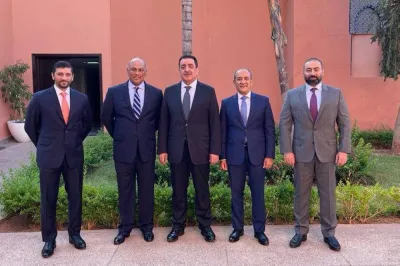Highlighting that the near-to-medium term outlook for the Qatari economy is benefiting from increased oil prices and prudent macroeconomic policies, IMF said, “We anticipate overall real GDP growth of 3.1% in 2019, with still robust non-hydrocarbon growth and recovery in oil and gas production.”
In its recent assessment of the nation’s economy, the Washington, DC-based Bretton Woods Institution noted that significant fiscal and external buffers have enabled Qatar to successfully absorb the adverse shocks from the decline in oil prices during 2014-16 and the diplomatic rift with its neighbours.
Qatar’s near-to medium-term outlook, the IMF said, “Remains favourable in the context of relatively higher hydrocarbon prices, prudent fiscal policy, and healthy financial system and accelerated structural reforms.”
“Qatar’s economic performance continues to strengthen. Non-hydrocarbon output grew by about 6% during the first half of 2018, as the economy recovered from the impact of the diplomatic rift and oil prices surged,” the IMF said.
However, hydrocarbon output fell by about 1.6% during the same period, culminating in overall real GDP growth of 2.3%, IMF said, adding real GDP growth of 2.4% is projected for 2018 as a whole up from 1.6% in 2017.
Fiscal and external positions are strengthening, and the central bank’s foreign exchange reserves have increased, it said, adding monetary and financial conditions have improved “significantly”, with banks attracting non-resident flows and were able to reduce reliance on the financial support from the fiscal and monetary authorities.
Over the course of 2020-23, IMF projects Qatar’s real GDP growth of about 2.7% annually, underpinned by still significant public infrastructure spending, expansion of liquid natural gas production, and the hosting of FIFA World Cup 2022, which the country is proudly hosting.
Despite higher oil prices, Qatar plans to pursue prudent fiscal policy while taking into consideration its associated impact on the economy.
The 2019 budget is expected to contain overall expenditure growth, with continued emphasis on allocation to critical sectors (health and education).
The current account surplus is projected at about 7% of GDP (gross domestic product) in 2019. Qatar Central Bank’s foreign exchange reserves are expected to increase further, reaching about $36bn in 2019.
Finding that progress with structural reforms continues, IMF said the second national development strategy highlights the need for economic diversification.
The strategy identifies priority sectors including manufacturing, financial services, and tourism, while emphasising competitiveness and the role of the private sector.
Qatar is endowed with major hydrocarbon reserves, especially in relation to the size of its population. Nearly all of its gas reserves are contained in an offshore gas field called the North Field, which is the largest, single natural gas deposit in the world.
Combining Qatar’s reserves of gas, crude oil and condensates equated to 172bn barrels of oil equivalent (boe) in 2017. This, according to QNB, corresponds to 62.8k boe per capita - easily the highest in the world.



